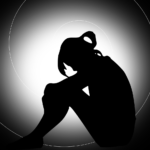Self-harm refers to hurting oneself purposely but without wishing to die. There could be multiple reasons why individuals indulge in self-harm. According to the empirical evidence, self-harm is a complicated issue for many teens and young adults, but they see it as a required pain. Such individuals are found to engage in self-harm because, for them, this makes their life easier to handle since it gives them peace, protection, and a way to control their strong emotions. They hurt themselves because they were hooked to self-harm and felt shame, guilt, and need to punish themselves. People around them make them feel alone, different, and judged, so they try to hide how they really feel. According to such individuals, they beg for help with their wounds and scars instead of words.
A study conducted to understand the reasons behind self-harm in adolescent girls found that individuals who hurt themselves feel strong mental and physical needs that can only be satisfied by hurting themselves. This suggests that self-harm might be a compulsive illness instead of an impulsive one, which is a new way to look at the behavior. The study discovered five themes or reasons for self-harm, in simple words. These include controlling emotions, a desire to hurt oneself, hurting oneself to stay alive, interpersonal causes, and the idea that relationships, not machines, can stop people from hurting themselves.
Gender and Cultural Differences in Terms of Self-Harm
It is interesting that while most people think that non-suicidal self-injury (NSSI) affects women more than men, studies of the whole population show that the numbers are the same for both. However, there does seem to be a difference between men and women in the types of NSSI that are used. In particular, women are more likely to cut, while men are more likely to hit or burn. Lastly, two other sociodemographic trends have been talked about many times. People who say they are non-heterosexual (like gay, bisexual, or unsure) and Caucasians are more likely to have NSSI than people of other races.
Major Types of Self-Harm
The reasons behind self-harm differ from person to person and so does the type of self-harm they indulge in. These types can be divided into direct and indirect self-harm. Some of the forms of self-harm that are covered in these categories are mentioned next.
Direct Self-Harm
- scratching with nails or something else (even biting yourself)
- cutting or poking the skin
- getting cut by a razor, knife, scissors, or piece of broken glass
- pressing something toxic against the skin or a certain part of the body
- burning
- making it harder for scars or cuts to heal
- hitting head on something hard
- hitting a hard surface with arms, legs, hands, feet, or sides so hard that one gets a bruise or break a bone
- intentional harm to any other body part
- excessive workout
Coming in the Way of Harm
- swallowing things or chemicals that cannot be digested
- trying to choke, strangle, or hang oneself.
- doing something very dangerous for example, trying to set oneself on fire
- shooting oneself with a gun with the chance of killing yourself
- being very careless while driving
- standing, sitting down, or jumping on train tracks when a train is coming
Suicide
- attempting suicide to end one’s life
Indirect Self-Harm
Neglect
- purposely not taking medicine that the doctor recommended (like forgetting to take it)
- not going to the doctor for a new or long-term health problem
- willfully not getting the sleep one needs for more than three nights in a row
- abusing prescription or over-the-counter drugs
- not eating enough purposely or not getting enough nutrition
- not drinking any fluids to stay hydrated
Coming in the Way of Harm
- walking into a busy street without checking to see if any cars are coming
- choosing or starting a very uneven physical fight to put oneself in danger
- walking alone in areas that are known to be dangerous because of street crime as a way to put oneself at risk
- putting oneself in harmful situations by using drugs that are known to have very bad effects
- getting in touch with or working with organized crime to put oneself in danger
Signs of Self-Harm
Some signs of self-harm include the following:
- getting cuts, bruises, or cigarette burns on their hands, arms, legs, and chest that they cannot explain
- covering themselves completely at all times, even when it is hot; pulling their hair out
- abusing drugs or alcohol
- hating themselves and wanting to punish themselves; saying they don’t want to go on and want to end it all
- spending a lot of time alone and not talking to anyone
- changing the way they eat or being secretive about it
- losing or gaining a lot of weight
- blaming themselves for problems or thinking they are not good enough
- signs of depression, like being sad, crying, or not wanting to do anything
Conclusion
In conclusion, self-harm is a complicated and often misunderstood behavior that people of all ages and backgrounds experience. People hurt themselves in many different ways, and the reasons they do it are always different from one person to the next. Some do it to deal with strong feelings, while others do it to take charge of their pain. No matter what the reasons are for self-harm, it is a harmful habit that needs understanding and kindness.
In order to deal with their problems and learn better ways to cope, people who hurt themselves need to get help from mental health workers and online support groups. Individuals can learn to handle their feelings healthily and safely with the right help and tools.
Finally, society needs to get rid of the shame that surrounds self-harm and give people who are suffering a safe place to be without being judged. By making people more aware and helping them understand, we can work to lower the number of people who hurt themselves and improve everyone’s mental health.
I am a passionate and knowledgeable psychologist, with a Master of Philosophy (MPhil) in Psychology specializing in Counseling Psychology. Through my writing, I share my insights and thoughts on various psychiatric disorders, conduct analysis on films that touch on psychological issues, and explore other topics related to psychology, while also providing valuable information to psychology enthusiasts, students as well the general community.





